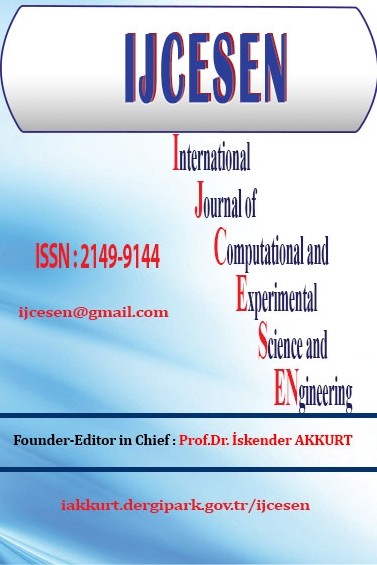Environmental Radiation Doses from Patients Undergoing Tc-99m DMSA Cortical Renal Scintigraphy
Environmental Radiation Doses from Patients Undergoing Tc-99m DMSA Cortical Renal Scintigraphy
DMSA, Radiation Dose, Tc-99m,
___
- [1]Boschi, A., Martini, P., Pasquali, M., & Uccelli, L. Recent achievements in Tc-99m radiopharmaceutical direct production by medical cyclotrons. Drug development and industrial pharmacy, (2017), 43(9), 1402-1412.
- [2]Piers, D. A., Kosterink, J. G., & Meijer, S., Renal handling of technetium-99m DMSA: evidence for glomerular filtration and peritubular uptake. Journal of nuclear medicine: official publication, Society of Nuclear Medicine, (1989), 30(7), 1219-1223.
- [3]Arnold, R. W., Subramanian, G., McAfee, J. G., Blair, R. J., & Thomas, F. D., Comparison of 99mTc complexes for renal imaging. Journal of Nuclear Medicine, (1975), 16(5), 357-367.
- [4]Chervu, L. R., & Blaufox, M. D., Renal radiopharmaceuticals—an update. In Seminars in nuclear medicine , (1982), Vol. 12, No. 3, pp. 224-245).
- [5]Mendichovszky, I., Solar, B. T., Smeulders, N., Easty, M., & Biassoni, L. Nuclear medicine in pediatric nephro-urology: an overview. In Seminars in nuclear medicine, (2017, Vol. 47, No. 3, pp. 204-228, doi.org/10.1053/j.semnuclmed.2016.12.002
- [6]Snodgrass, W. T., Shah, A., Yang, M., Kwon, J., Villanueva, C., Traylor, J., ... & Bush, N. C. Prevalence and risk factors for renal scars in children with febrile UTI and/or VUR: a cross-sectional observational study of 565 consecutive patients. Journal of pediatric urology, (2013), 9(6), 856-863.
- [7]Goswami, R., Bal, C. S., Tejaswi, S., Punjabi, G. V., Kapil, A., & Kochupillai, N. Prevalence of urinary tract infection and renal scars in patients with diabetes mellitus. Diabetes research and clinical practice, (2001). 53(3), 181-186.
- [8] MacKenzie, J. R., DMSA-the new ‘gold standard’, Nuclear Medicine Communications, (1990): 725-726.
- [9]Ajdinović, B., Jauković, L., Krstić, Z., & Dopuda, M. Technetium-99m-dimercaptosuccinic acid renal scintigraphy in children with urinary tract infections. Hellenic journal of nuclear medicine, (2006), 9(1), 27-30.
- [10]Lassmann, M., Biassoni, L., Monsieurs, M., Franzius, C., & Jacobs, F., The new EANM paediatric dosage card. European journal of nuclear medicine and molecular imaging, (2007). 34(5), 796-798.
- [11] Baert, Albert L. Diagnostic nuclear medicine. Springer Science & Business Media, 2006.
- [12] Bennett, Paige A., and Umesh D. Oza. Diagnostic Imaging: Nuclear Medicine E-Book. Elsevier Health Sciences, 2015.
- [13] Günay, O., et al. "Determination of radiation dose from patients undergoing Tc-99m Sestamibi nuclear cardiac imaging." International Journal of Environmental Science and Technology (2019): 1-8.
- Yayın Aralığı: 4
- Başlangıç: 2015
- Yayıncı: Prof.Dr. İskender Akkurt
A Framework for Query Optimization Algorithms for Biological Data
Khalid Mohammad JABER, Nesreen A. HAMAD, Fatima M. QUIAM
Investigation of Various Infectious Diseases in Turkey by Mathematical Models SI and SIS
Shuang ZHANG, Huiqing LIU, Jie BAI
Guessoum MELİA, Chelghoum NADJAT, Haddaoui NACERDDİNE
Unimodal Optimization of Axially Compressed Shear Deformable Columns
Experimental Raman study of N-phenyl-3-para nitrophenyl isoxazolidine-5-carbonitrile
Karima BOUDHAR, Mahdi DEBIECHE
Excitation Functions for the Proton Irradiation on 45ScTarget
Susan SHUKUR NOORI, İskender AKKURT, Nurdan Karpuz DEMIR
Full reference video quality evaluation using foveated vision and multiple fixation points
Mario VRANJEŠ, Snježana RİMAC-DRLJE, Denis VRANJEŠ
Environmental Radiation Doses from Patients Undergoing Tc-99m DMSA Cortical Renal Scintigraphy
